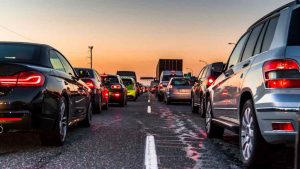What Are The UK’s Legal Stopping Distances?
Tailgating is one of the most common causes of car accidents in the UK. All motorists at one point, had the legal UK stopping distances memorised for their driving tests, but how many actually remember them today? A stopping distance is the legal amount of space required to bring your vehicle to a halt from the moment you first notice a hazard. To avoid such a common accident, it is important to know how far away you should be from the car in front of you and what could possibly alter your stopping distance throughout your vehicle’s life.
What are the legal stopping distances?
When it comes to calculating the stopping distances, there are two aspects you need to consider when determining. These are thinking distance and braking distance. The brain needs a certain amount of time to register what you are seeing, and therefore, thinking distance is just this. This is the distance you travel whilst your brain interprets the scene in front of you and the time it takes for you to press the brakes in order to stop in time. Braking distance is slightly more obvious. This is the distance your car travels once the brakes have been applied before it comes to a complete standstill. So to calculate the overall stopping distance, all you need to do is add the thinking distance to the braking distance.
Of course, these figures cannot be perfectly accurate as there are many other factors that contribute to the stopping distances of your vehicle, which we will cover slightly later on. However, they are a general guideline to follow when working out your car stopping distance. Ideally, the below should be roughly correct, depending on the speed you are driving. For example;
- Speed: 30mph = a thinking distance of 6 metres (roughly the length of 1.5 cars)
- Speed: 30mph = a braking distance of 14 metres (roughly the length of 3.5 cars)
- Total stopping distance = 20 meters when driving at 30mph (roughly the length of 4.5 cars)
What can affect the braking distance?
Once you can roughly work out the average stopping distance for an average car, you need to think about the kind of conditions you are going to be driving in. Many of these factors can be an afterthought, and this is what can cause accidents. Below, we are going to cover a few of the contributing factors as to why braking distances may vary or be affected.
- The Weather – Perhaps one of the most obvious, and most regular factors that will affect the stopping distance of your vehicle is the weather. Braking distances will always increase if the surface of the road is slippery and wet from any rain or snow. Whilst braking distances are physically affected, thinking distance can be affected by low visibility. This can be caused by fog, snow, rain or bright sunshine. These conditions cause it to take longer for the driver to realise that they’re in a situation where the brakes need to be applied.
- The Vehicle – The condition of the vehicle as a whole, as well as the condition of the brakes, has a huge impact on the braking distance. It is important to have your brake pads checked regularly and replaced if and when necessary. The condition of your tyres must also be considered when it comes to braking distances. If they are worn down, and/or under-inflated, braking distances are highly compromised and significantly reduced, causing a high risk of accidents. When compared against each other, budget tyres require slightly more stopping distances than they do premium tyres, so it is also worth considering your vehicle’s needs and the driving environment when purchasing tyres.
- The Driver – Human factor can play a big part when it comes to how your braking distances are affected. If the driver is tired or has been driving for a long period of time, think distances are increased. Sadly, tiredness is one of the biggest killers when it comes to road accidents and is something that must be considered each time drivers set off on a journey. Distractions can also cause drivers’ reactions to being slower and it can take longer for them to decide to slam the brakes on. It is also widely known that any influence of drugs or alcohol when driving can also affect our reactions and can easily cause the reactions to be slower, and result in possible accidents.
- The Condition of the Road – Another fairly obvious one for motorists is the conditions of the road. If the day is a hot, sunny summer one, any rain on the surface of the slick road can cause the surface to be greasy and increase the stopping distances. The smoother the road, the more slippery it is likely to be. Any oil on the roads or loose gravel may also contribute to how the braking distances perform.
For more information, take a look at our other informative blog posts, otherwise shop the etyres range here.




